Following recent notes on the delicious first half of a session with local hero, Apache, in which we encountered a series of recent 7542s, we then embarked on the following excursion into more remote times.
2000 Menghai
The 2000 Menghai 7542 is a large sample, provided by Grand Tea. My companion has some unspoken reservations concerning this tea, which he withholds until I have had the chance to try it, to see if my experience matches his own.
My first impression is that the neifei [inner ticket, pictured above] is dazzingly white - moreso than one would anticipate for a cake that is nominally 11 years old.
2000 Menghai
The scent of the (rather pretty) leaves, which are shown above, is one of humidity. When brewed, the soup is a decent colour of heavy orange, as in the image below. It is at this stage that I begin to suspect what it is that Apache is not saying: there is almost no aroma. In the mouth, the character is faded, empty, and light.
It has the "fishy" character, for want of a better adjective, that was common to the 2003 and 2004 versions described previously. It is clearly 7542, but seems so absent that I wonder if the storage has tired it out. Apache agrees, and we discuss the reliability of Grand Tea.
2000 Menghai
Onto more familiar pastures, next, as Apache reveals a sample of the 1998 "Shuilanyin" 7542, from Essence of Tea. I have tried the same (with notes here) from Houde.
The leaves are shown below, which are quite small in this sample. I long for more of the same delicious nature that I first encountered sometime in 2007.
1998 Shuilanyin
We are not disappointed - this is "proper pu'er", and the two drinkers each breathe a heavy sigh of relief and contentment. As one would hope, it is long, heavy, and densely sweet - with that peculiarly powder-like texture much beloved of some old cakes.
I wrote that it is "bookish and humid", which is a compliment. Examine the image shown below, if you will, and observe the dense central colour of the soup, with its thinner meniscus.
Amusingly, some of the bean-like "fishy" character of the other cakes may be discerned in the complex structure of this tea, and I am pleased to detect at least some similarity between them, even if difficult to describe.
1998 Shuilanyin
Ordinarily, Apache and I would have dedicated the remainder of the session to a pu'er as fine as the Shuilanyin [water-blue label], and yet, boisterously, we march on to the next encounter...
1996 CNNP
I have only tried a 7532 from the year 1996, which was a sample of "green-in-orange" from Essence of Tea. This cake comes from an undisclosed location.
1996 CNNP
It is a shaggy, untidy cake, which makes it instantly adorable. Perhaps you can see that the colour of the tips has tended towards the orange, rusty colour of age. The aroma of the dry leaves is fresh and sharp - no humidity may be detected here.
1996 CNNP
Exhibiting his Asian deftness, Apache relieves the bing of a quantity of leaves...
1996 CNNP
This is nicely orange, although less dense in colour than the 1998 Shuilanyin. We wonder if this is a consequence of its lack of humidity, because this cake is dry indeed - and entirely delectable.
It remains big, bold, and surprisingly astringent, courtesy of its storage conditions. Present and full such as it is, I would never have guessed that it was created in 1996.
Such is my delight at this cake, that I tuck the remainder of the wet leaves away into a gaiwan for further rumination on some later day.
1996 CNNP
So the last shall be first, and the first last: for many be called, but few chosen.
Apache reveals the '88 "Qingbing".
88 Qingbing
I have come across one incarnation of this old classic (which was actually made in 1989, rather than 1988) before, thanks to the exceptional generosity of KC, the notes for which may be found here. I found that sample to be mighty fine, but "loose" and watery. It was easily exhausted, rapidly requiring longer brews.
88 Qingbing
Apache's sample comes from Essence of Tea, and is a different tea: it is long, cooling, and so very sweet. Its texture is one of extreme heaviness, and its smooth body is remarkable.
Residual scents of vanilla linger in the nose after the swallow, and the separation of colour into a red centre and a golden meniscus is clear, as shown above and below.
"Subtle, but there", remarks Apache, as we discuss the huigan.
88 Qingbing
And so it is. The 88 Qingbing and the 1996 7542 both live on in their respective gaiwan to give me days of pleasure thereafter, reminding Lei and I of the most excellent tea session with Apache. After the main consideration of enjoying good tea with great company, I feel as if I have learned a little regarding the common features of 7542 - particularly from 2003 and earlier. Even though it is undoubtedly changed incarnation many times through the years, there is a kernel of constancy that does not abandon it.
We will give the parting words to Apache himself,
"I cannot strain my imagination sufficiently to find a link between these older varieties and modern 7542."

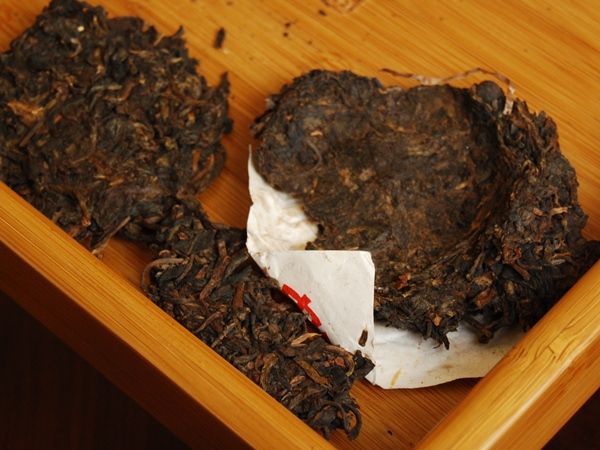

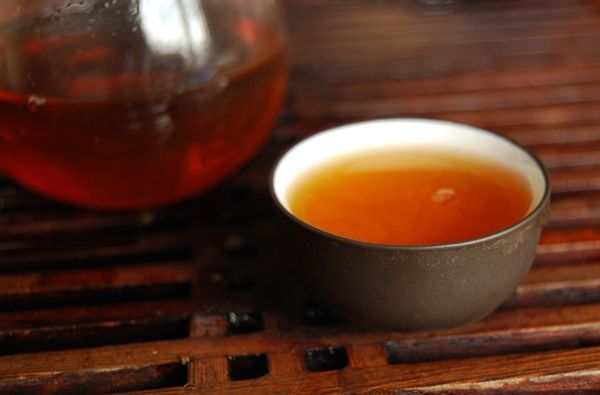
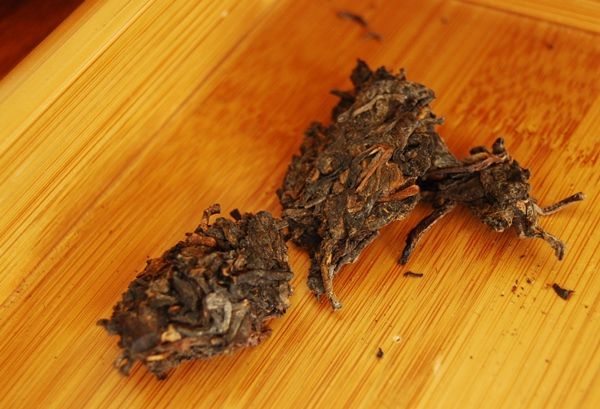

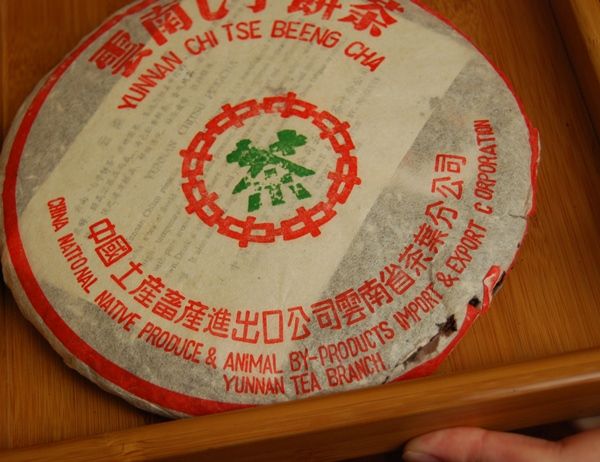
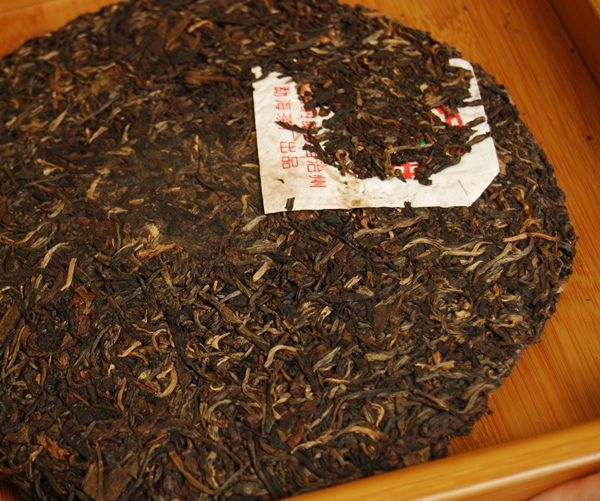
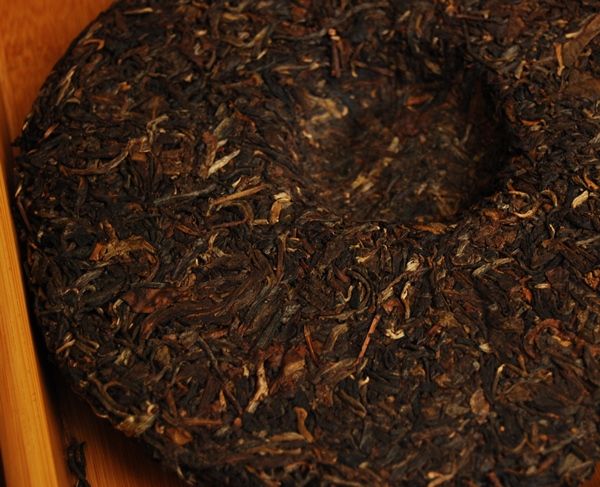
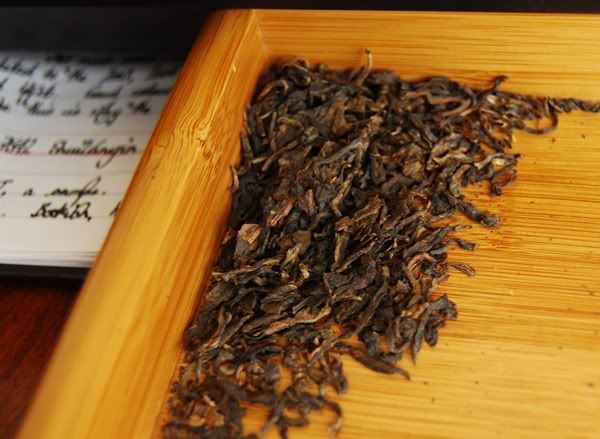
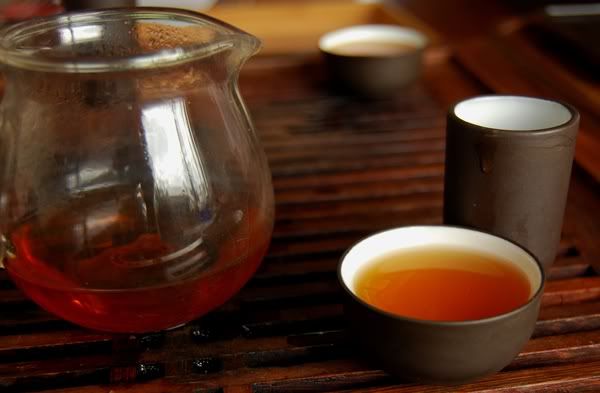
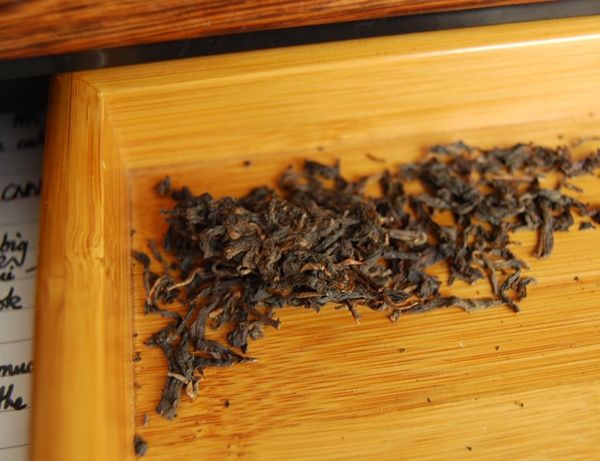
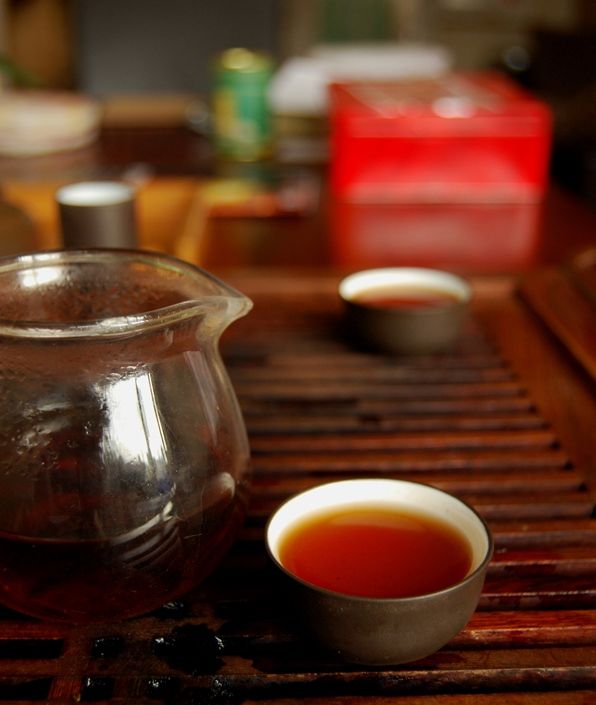
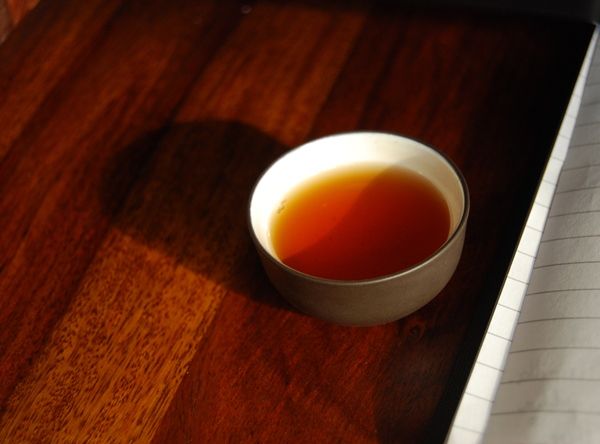
13 comments:
That last comment is most apt , I think!
Su
It is a very well written account of our 7542 study and I cannot think of anything to add. It was a record for me to drink that amount of tea in one afternoon. I don't know how did you feel afterward, but I didn't drink any tea for a couple of days after that. The finest of that day probably belongs to the 88-Qing closely followed by the Shuilanyi which I for one would really like to see Mr EoT to re-stock it! The 1996, even if it were over stated it's age, I think it is still worth its salt with it immense potential and I don't come across modern cakes with this kind of potential very often.
Thank for hosting this study session as well as making me feel welcome.
apache
Very interesting post!
Thanks, all.
It was a pleasure to have you, Apache - our door is always open, as you know! Perhaps next time you come we can drink our way through my recent Maliandao acquisitions. Some old, some new, all tasty. :)
Toodlepip,
Hobbes
Su - I think that there is more to the separation between Dayi 7542 and the older varieties (Menghai, CNNP) than mere age. The blend has definitely changed, let alone the changes to the actual leaves themselves. There is a step-change around 2003/2004, I think.
That said, as I observed in the previous article, the modern Dayi versions seem to be aging well, nonetheless - they're just different to the older recipes.
Toodlepip,
Hobbes
Hobbes,
You have managed to create more questions about the 7542 than I thought I could muster!
I am getting confused.
As I understand things:
--"7542" refers to recipe (invented '75), grade of leaf (4) and factory (2).
-- The 7542 is from the Dayi factory, which used to be the Menghai Tea factory, which used to be the CNNP Factory.
Correct?
If so, where do the various titles such as "Shuilanyin" or "Green in Orange" come from? Are these particular stored batches or something?
As a second point/query...
If the 7542 has changed at certain times during its production history, is there any official word on this from the manufacturer?
There must be someone out there that knows the history of the 7542 production over the last 30/40 years - or are they sworn to secrecy!?
The mysteries of Puerh can be charming but also damn well frustrating!!
I'm not really sure why, but none of my comments were showing up on part 1 of this post. It seems people are commenting a-ok on this one though.
Anyhow, Blake again here. Thanks for the great post(s). The 7542 was the first cake I ever bought, and still have half of it. It's from 04, and I decided to brew some up today because of these posts. But in fact, that's not all I decided to do.
I made a blog just like I said I would, and the first post is even titled after you. Hope you enjoy reading it. Here's a link to the post. http://iampbr.blogspot.com/
-Blake.
Dear Drumhum,
Quite right on your two statements. "Shuilanyin" [water-blue label] and "Green in Orange" both refer to particular years (often, particular batches) of a cake. These are both 7542s. There is speculation about the meaning of the name "Shuilanyin", but "green-in-orange" refers to the colour of the "cha" [tea] stamp in the circle of "zhong" characters [referring to the name of China].
Different people claim different changes in the 7542 recipe, and I don't believe that there is a consensus - but I would be delighted to be proven wrong.
Like all things much-beloved in China, folklore and story-telling becomes part of the history of pu'er, and it becomes difficult to separate the fact from the embellishment. I take the approach that my tastebuds are the ultimate judge. :)
Toodlepip,
Hobbes
Dear Blake,
Excellent work! I look forward to reading your blog.
If I may offer some simple words of advice, it would be merely to write when the mood takes you. Don't make it a chore, or you'll give it up quite quickly. See how it goes, and enjoy yourself.
Best wishes,
Hobbes
Dear Drumhum,
A generous correspondent has kindly corrected me via e-mail: "X-in-Y" corresponds to the colour of the "cha" character on the neifei (colour "X") and the colour of the "cha" character on the front of the wrapper (colour "Y").
Toodlepip,
Hobbes
Was the dry-stored 1996 CNNP 7542 from Puerh Shop by any chance?
Would any of you beloved computationalists care for a bit of a tea sesh at the SfN meeting this year?
Looking forward to hearing of this new vendor from Maliandao!
Prost!
~STF
Dear STF,
I believe that the 1996 didn't come from Puerh Shop.
Where is SfN? I'm always happy to meet teafolk for a session!
Toodlepip,
Hobbes
I've just had another session with my 2001 7542. I really have to agree with Apache about the lack of connection. Not quite so much the flavor--obviously plenty of plantation, etc, but I don't recall the newer Dayi, like Jin Se Yun Xiang, An Xiang, Pu Tian, '09 7542, '05 or '08 Peacocks, etc, have the kind of strength of oily sweetness, qi, or massaging throatfeel. I think all of the above has a better flavor, actually, but not so much of the true *cha* essence.
Post a Comment